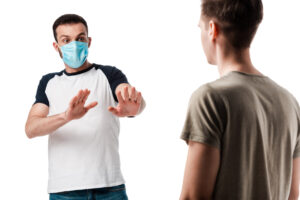
As I continue to see clients online during this “COVID Era” as I call it, I notice patterns of how “my guys” are coping. Of course, dealing with the whole COVID-19 pandemic and its many stressors about the economy, work, housing during quarantine, relationships, and dating manifest in different ways, depending on where you live (where there might be heavier or lighter social restrictions, such as whether your local gym is open), whom you live with (I notice single guys have a tougher time, overall, than partnered/married guys), and what you do for work (assuming you are working, and not just laid off, and that you can work online).
Mixed in with this, of course, is sex. I’ve tried to look into the sexual aspects of dealing with COVID-19, especially as I’ve been working fast to complete the various requirements in the process to become a Certified Sex Therapist, which should happen by about January, 2021 (it’s nice to have a “project”, or several, during a pandemic and a tortuous election season).
As I consider the philosophical, and, more importantly to my clients, the practical considerations of how to handle the idea of sex during COVID, I’m reminded of some guiding principles that maybe all of us would do well to remember.
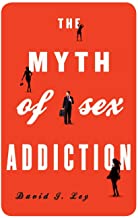 I am fortunate to have what therapists call “clinical supervision” as part of the long continuing education that Certified Sex Therapists must accrue. Two of them are David Ley, Ph.D., author of many wonderful books on sexuality and sexual health, including The Myth of Sex Addiction and Ethical Porn for Dicks, and Michael Vigorito, LMFT, who, along with Doug Braun-Harvey, wrote the book Treating Out of Control Sexual Behavior, which is a wonderful and clinically-sound, research-based alternative to the charlatanism of “sex addiction treatment.”
I am fortunate to have what therapists call “clinical supervision” as part of the long continuing education that Certified Sex Therapists must accrue. Two of them are David Ley, Ph.D., author of many wonderful books on sexuality and sexual health, including The Myth of Sex Addiction and Ethical Porn for Dicks, and Michael Vigorito, LMFT, who, along with Doug Braun-Harvey, wrote the book Treating Out of Control Sexual Behavior, which is a wonderful and clinically-sound, research-based alternative to the charlatanism of “sex addiction treatment.”
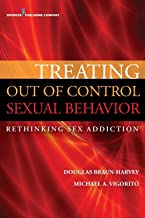 In their book, Vigorito and Braun-Harvey give us Six Principles of Sexual Health. With their inspiration, let’s discuss each of these within the context of COVID-19:
In their book, Vigorito and Braun-Harvey give us Six Principles of Sexual Health. With their inspiration, let’s discuss each of these within the context of COVID-19:
- Consent – Sexual health involves both a “cooperation” and “permission” to share sexual energy and activities with a willing partner, which usually means another “consenting adult”, but I also take it to mean two consenting, sexually-active adolescents as well. In this COVID era, consent means that two (or more) people are engaging sexually with an assumption that the players involved know how COVID is generally transmitted, and they are doing (or refraining from doing) whatever they feel comfortable with in terms of risk tolerance for exposure risk, and that everyone is reasonably informed of how to take measures to protect themselves, certainly from COVID, but other sexual health considerations as well (STI’s and HIV), as well as any personal, emotional, cultural, spiritual, or social considerations as well.
- Non-exploitation – This means that no sexual partner is misusing one’s power and control to take some kind of unfair advantage of their partner(s). They are considering the potential risk of harm, but also mutual reward. In COVID, this means that both parties are only doing what they feel is comfortable, given their level of risk and any underlying, complicating factors. Maybe a younger person might draw the line more conservatively if they lived with elderly relatives, for example, who are even higher risk if they were to contract COVID. Maybe an older person might opt for masturbation or some kind of video-enhanced sexual activity instead of in-person acts (tips on what could be actually done sexually in the context of COVID are below).
- Protection from STI’s and Unintended Pregnancy – Sexual health principles always involve a consideration of the reality of sexually-transmitted infections, and how a person performs the self-care (like so many other medical self-care habits) of screening, and, if necessary, treatment of STI’s. The prevention of pregnancy is also a consideration, certainly for heterosexual, cisgender partners, but also it’s an issue for partners who might be trans but still fertile (trans masculine individuals can, and do, get pregnant, which is something far too many health care professionals overlook). So when we add in COVID, while COVID is not especially considered an STI, there can be risks of transmission during sex. So, especially for gay men, besides the “usual” considerations of sexual health involving HIV prevention (such as PrEP and/or condoms) and STI prevention (and screening detection/treatment), there is that additional “layer” of protection in terms of where they might “draw the line” of what they will and won’t do in consideration of COVID prevention as well.
- Honesty – As a therapist, I see many examples both for gay male couples and sexually-active individuals where honesty is a very good component of sexual health. Frank communication without self-censorship or shame of what you do want and what you don’t want in sex is important. Honesty certainly is a huge component of both monogamous (and its many variations) and Consensual Non-Monogamous (CNM) (and its many variations) relationships (btw, I’m also in a program now to become certified in CNM Relationships, again through the Sexual Health Alliance). Many things can be achieved in sex, whether it’s a hookup or a long relationship, just through being honest. In COVID, honesty about where you’ve been hanging out, how many people you’ve been socializing with, whether or not you’ve been in lower risk (such as outdoor restaurants that are socially distanced) or higher risk (large gatherings like pool parties, house parties or crowded gay bars, clubs, or resorts) contexts and to what degree you and the others around you have been masked are all key. This kind of honesty helps your sex partner to determine how much they are or are not willing to do with/to you sexually.
- Shared Values – This principle doesn’t mean that you have to be the same culture, religion, spirituality, or political party, but it implies that the best sex happens when the motives, standards, and meanings of sex are discussed. In COVID, shared values might mean to what degree you are both committed to doing what you can to contain the pandemic as “responsible citizens”, but also perhaps applying principles of Harm Reduction, meaning that you are balancing the obvious social imperative to contain the spread of COVID along with an understandable, powerful human need to gratify oneself sexually, especially since the challenge of our society (in so many countries) living with COVID implies that we are making adjustments for certainly months (already) and possibly years before we return to pre-COVID lifestyles.
- Mutual Pleasure – This implies that everybody is having a good time here, similar to the “non-exploitation” idea. Even in BDSM play, where the “pleasure” can be through certain kinds of playing with the idea of “pain”, it’s still about a mutually-gratifying experience. In COVID, making behavioral adjustments in practical terms can mean mutual pleasure at the same time that there isn’t unreasonable risk, not unlike what gay men have faced for years with the prevention of HIV/AIDS through “safer sex”, which can mean anything from what you do (manual, oral, anal, etc.), whom you do it with, or how you do it (top/bottom “strategic positioning”, use of condoms, use of PrEP) or some combination of all of these (and more) to have a good time (in life-affirming ways) but without some real “price tag” (which goes beyond what an escort might charge!).
(adapted from Braun-Harvey, D. & Vigorito, M. A. (2016). Treating Out of Control Sexual Behavior, pp. 46-47).
WHO Guidelines
The World Health Organization (WHO) offers some additional points about sexual health:
“When viewed holistically and positively:
- Sexual health is about well-being, not merely the absence of disease.
- Sexual health involves respect, safety and freedom from discrimination and violence.
- Sexual health depends on the fulfillment of certain human rights.
- Sexual health is relevant throughout the individual’s lifespan, not only to those in the reproductive years, but also to both the young and the elderly.
- Sexual health is expressed through diverse sexualities and forms of sexual expression.
- Sexual health is critically influenced by gender norms, roles, expectations and power dynamics.
Sexual health needs to be understood within specific social, economic and political contexts…”
 When we apply these to COVID-19, we again revisit the idea that we simply cannot “ignore” or try to repress all aspects of sexuality just because there is a global pandemic that has killed hundreds of thousands of unique, valuable, and wholly irreplaceable human beings. The magnitude of morbidity and mortality that COVID-19 represents certainly demands attention, response, and adaptation of behavior by anyone with any shred of social conscience at all (but as we’ve seen, not everyone has that, which is why, in part, the pandemic persists with relatively little containment worldwide, especially in the United States).
When we apply these to COVID-19, we again revisit the idea that we simply cannot “ignore” or try to repress all aspects of sexuality just because there is a global pandemic that has killed hundreds of thousands of unique, valuable, and wholly irreplaceable human beings. The magnitude of morbidity and mortality that COVID-19 represents certainly demands attention, response, and adaptation of behavior by anyone with any shred of social conscience at all (but as we’ve seen, not everyone has that, which is why, in part, the pandemic persists with relatively little containment worldwide, especially in the United States).
Just as in HIV/AIDS, where celibacy or complete abstinence was simply not a feasible human response to the human sex drive, worldwide, in all sexual and gender identities, so, too, with COVID-19. The complete obliteration of sex, no matter how “pat” a suggestion, is simply not feasible. What we are left with, then, is to apply principles of Harm Reduction.
Anyone who needs an explanation of what “Harm Reduction” is might enjoy the old joke about the hysterical “risks of masturbation”: “Don’t do that! You’ll go blind!”, and “Well…can I just do it until I need glasses??”
Harm Reduction is the very mature, practical, logical response to two (or more) competing values: We all want to avoid getting sick with COVID and having temporary or permanent damage to our health and subjective functioning, not to mention to avoid death of ourselves or our loved ones, but we are all also created with a sex drive (except in the case of asexual people, but that’s another topic worthy of discussion for another time). Life, including our sex life, goes on, even during famine, plague, and war.
What every person (more specifically here, gay man) needs to do is to become as informed as possible on the current data (which might evolve over time) on how COVID is transmitted, and then make decisions as to where their personal boundaries are in terms of sexual activity, from the most conservative approach (no partner contact, relying on variations of masturbation only) to more expansive approaches, which might be possible under certain guidelines. For example, most people would be very anxious to see groups of gay men (or anyone) congregating without masks or social distancing, from Trump rallies to gay resort events (such as summer in Provincetown, MA, or Fire Island, NY), or events such as Atlanta Pride in October. However, to my knowledge, we don’t know for sure that these events have been COVID “super spreader” events (although there have been some reports that the Sturgis Motorcycle Rally in South Dakota was a “super spreader” event, along with some Republican events and rallies as well). But there is some evidence that relatively large groups of gay men congregated (such as Atlanta Pride) without necessarily a COVID uptick (although earlier in the year, a number of cases and some deaths were related to Winter Party Miami in early March).
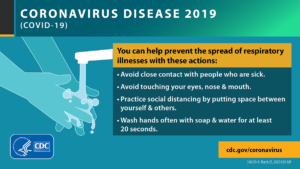
With somewhat conflicting news stories, we as gay men are left without all the information we need. However, we can take what information we do have, such as guidelines from the US Centers for Disease Control and Prevention, on what to do or not do for reasonable COVID prevention.
Like so many medical and health guidelines, the application more specifically to GAY MEN can be elusive. I, for one, get tired of feeling like I have to “translate” so much of mainstream, heteronormative material for myself as a gay man. So much material makes the heterosexist assumption that anything about “men’s health” is about STRAIGHT men’s health, and anything about women’s health ignores lesbians, and that’s before the almost-assured ignoring of anything that involves trans-affirmative medical guidelines. COVID is no different. Fortunately, there are some prominent exceptions, such as when the British Columbia Centre for Disease Control suggested “glory holes” as a harm reduction measure! Unfortunately, the (heterosexist, sex-negative) media took more of a derisive, devaluing approach to this rather than giving them credit for giving us actual practical advice that is clever and usable (their guidelines are here).
The old stand-by for gay-affirmative journalism, The Advocate (now straight-owned, as if you couldn’t tell) had a particularly brief, cursory, and generally low-quality and unhelpful set of guidelines here. While this contained some useful tips that you “should” probably review and consider for your own adoption, I thought they should have gone a little “deeper” (pun intended, OK?) on this topic, perhaps to address some of the mental health issues.
Mental Health Issues of COVID-19 for Gay Men
As a gay men’s specialist therapist for over 28 years, of course I’m going to consider the mental health angle of all this. Let’s start with the idea that gay men know a bit about containing global pandemics and the losses, fears, and stressors related to them. I have written previous articles on the mental health aspects of working from home and on COVID and gay men.
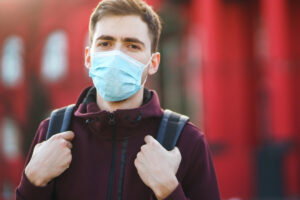
COVID is a new, scary, powerful, and drastically unwelcome turn of events in gay male culture. There is a sense among us older gay men that we “gave at the office” already in the 80’s and 90’s and beyond, and we had our fill of contagious pandemics with HIV/AIDS to last a lifetime right there. So, many gay men have had to deal with a sense of déjà vu, or even a revisiting of trauma of friends, loved ones, relatives, partners/spouses, or even ourselves being sick or dying from Mother Nature being a real bitch sometimes. COVID doesn’t “just” (as if HIV/AIDS ever did) affect gay men; in fact, there are some discussions about whether it’s affecting gay (or even HIV-positive) men less than the general population. If vicious religious bigots said “AIDS was God’s punishment” for gay men, what are they saying now about COVID affecting (mostly) straight people? Instead of the politics of anti-gay rhetoric, it’s been politicized as a “Democratic hoax” not only early on, but actually to this day, pitting Red Republicans (pun intended, again, with their ties to Russia) with Blue Democrats (so named for being blue in the face from screaming at Trump and his cronies’ atrocities in handling the COVID pandemic).
Like AIDS, the COVID pandemic requires us to try to find the best parts of ourselves for optimism, resilience, and adaptive coping. Gay men know this very well, too, in fighting systemic oppression for decades (or centuries), as well as all the coping we learned during the height of the AIDS crisis. We endured, then; we will endure now. In fact, we had (safer) sex then; we will have (a new version of) safer sex now.
Because as the gay icon, Cher, sings in a song written by Diane Warren, “You Haven’t Seen the Last of Me”: “I’ve been brought down to my knees. I’ve been pushed, right past the point of breaking, but I can take it. I’ll be back, back on my feet. This is far from over. You haven’t seen the last of me.”
(For individualized support during these difficult times, for you as a single person or for gay male couples, consider therapy or coaching. Online sessions are available now to anyone in the world with an Internet connection. Email Ken@GayTherapyLA.com, or text/call 310-339-5778 for more information on how to become a client.)
Guidelines and their Sources:
British Columbia (Canada) Centre for Disease Control: http://www.bccdc.ca/health-info/diseases-conditions/covid-19/prevention-risks/covid-19-and-sex
The Advocate: https://www.advocate.com/health/2020/7/29/glory-holes-masks-and-more-15-tips-safer-sex-during-covid-19#media-gallery-media-5 (which, oddly, features at least one heterosexual image in its discouragement of kissing)
UK National Health Service (general guidelines on healthy sex for gay men): https://www.nhs.uk/live-well/sexual-health/sexual-health-for-gay-and-bisexual-men/


